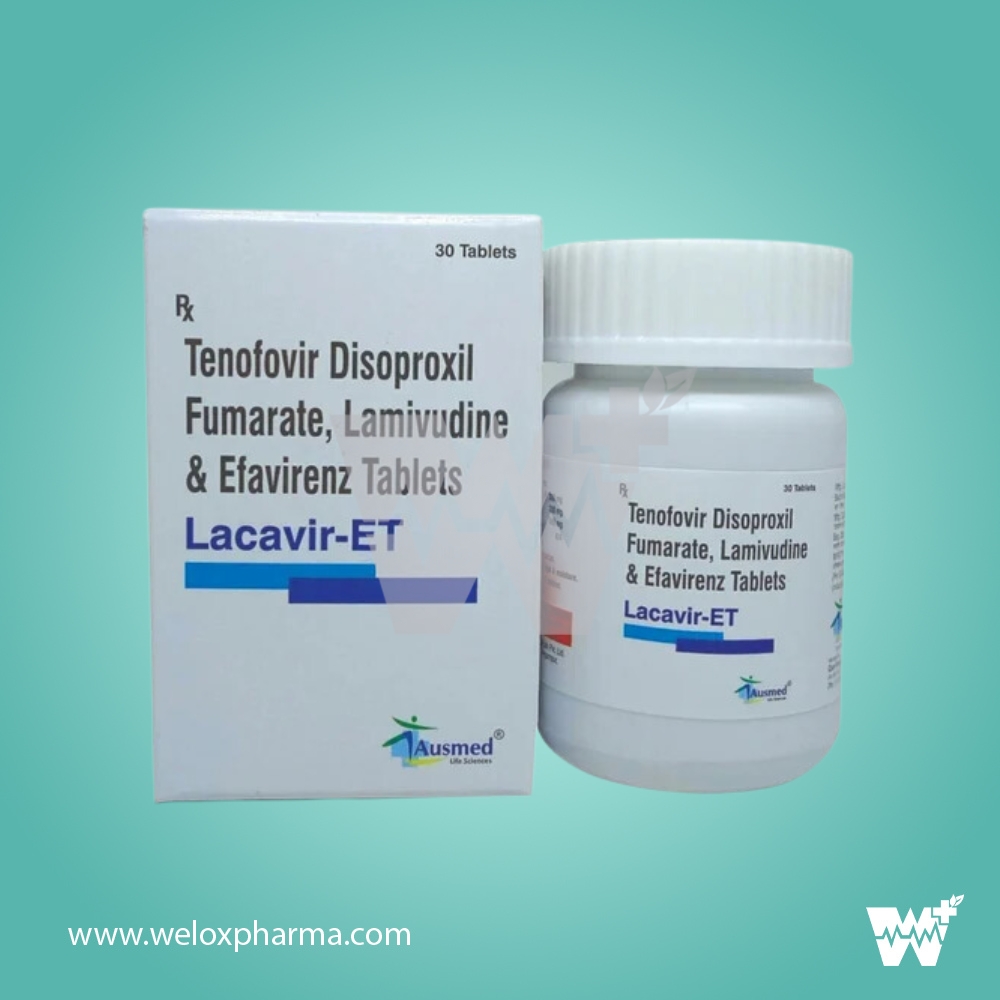



Introduction to Lacavir ET Tenofovir, Lamivudine and Efavirenz Tablets
Lacavir ET Tablets provide a convenient, once-daily regimen for individuals living with HIV-1. The combination of Tenofovir, Lamivudine, and Efavirenz offers a potent, triple-therapy approach to managing the virus, helping to reduce viral load and prevent the progression of HIV to AIDS.
Uses of Lacavir ET Tenofovir, Lamivudine and Efavirenz Tablets
HIV-1 Infection Management: Used as a part of antiretroviral therapy (ART) to treat and manage HIV-1 infection.
Viral Load Reduction: Helps in reducing the amount of HIV in the blood (viral load).
Immune Function Improvement: Aids in improving immune system function by preventing the replication of the virus.
Prevention of HIV Transmission: Lowering the viral load can reduce the risk of transmitting the virus to others.
Benefits of Lacavir ET Tenofovir, Lamivudine and Efavirenz Tablets
Effective Triple Therapy: Combines three antiretroviral agents, providing a comprehensive approach to HIV treatment.
Once-Daily Dosing: Simplifies treatment regimens, improving adherence and overall treatment outcomes.
Improves Quality of Life: Helps maintain a lower viral load, improving immune function and quality of life.
Reduces Risk of Resistance: The combination therapy helps reduce the risk of developing drug-resistant HIV strains.
Supports Long-Term Management: Essential for the long-term management of HIV, helping to delay disease progression.
Mechanism of Action of Lacavir ET Tenofovir, Lamivudine and Efavirenz Tablets
Tenofovir: A nucleotide reverse transcriptase inhibitor (NRTI) that prevents the virus from replicating by incorporating itself into the viral DNA.
Lamivudine: Another NRTI that inhibits reverse transcriptase, an enzyme crucial for viral replication, thereby preventing the virus from multiplying.
Efavirenz: A non-nucleoside reverse transcriptase inhibitor (NNRTI) that binds directly to the reverse transcriptase enzyme, causing a conformational change that disrupts its activity, thereby blocking the replication of HIV.